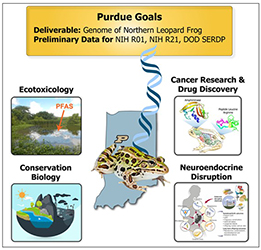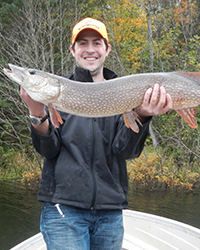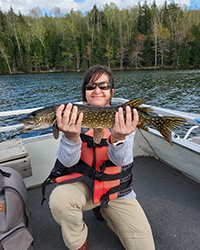Rana Pipiens Genome Sequencing
Principal Investigator(s): Dr. Marisol Sepúlveda, Dr. Amanda Pendleton &
Dr. Tyler Hoskins

Researchers

Amanda Pendleton, Post-doctoral Researcher
Purdue University

Tyler Hoskins, Research Assistant Faculty
Purdue FNR

Marisol Sepúlveda, Professor and Associate Head of Research
Purdue Forestry & Natural Resources
Research Objectives
A native to Indiana, the Northern USA, and Canada, the Northern leopard frog, Rana pipiens, has had historical, impactful roles in the study of endocrine disruption, cancer and drug discovery, conservation biology, and ecotoxicology. Coupling these continuing research avenues with R. pipiens along with the ease of laboratory rearing and achieving transitions from aquatic larval to terrestrial adult stages in a single season, R. pipiens serves as an excellent model system. However, no reference genome exists for this species, which limits its utility in multiple disciplines. Furthermore, there is a dire need for more amphibian genomes, as this large and diverse taxonomic group is among the least abundant in the list of available animal genomes.
Our goal is to generate a high-quality draft genome assembly of the triploid R. pipiens using long and short-read sequencing technologies and a comprehensive gene call set using already sequenced transcriptomic resources.
- Rana pipiens serves as an excellent model system
- There is a need for more amphibian genomes
- Generating a genome assembly of R. pipiens using long and short-read sequencing technologies and a comprehensive gene call set using already sequenced transcriptomic resources

